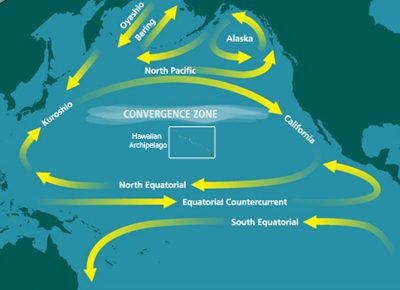I have posted plenty of information about the Pacific Trash Vortex and some of the upcoming struggles that our society will face as our numbers continue to grow and we continue to be a wasteful society. It's starting to get a bit depressing. But... there is hope. There are things that we all can do to help keep our oceans safe, clean, and sacred:

1. RECYCLE: for me, it's easy, the city I live in offers free recycling. I have a bin that is outside that I utilize for any cans, plastic, boxes, papers, etc. However, for some of you it isn't so easy. But here are some suggestions:
- If you live in an apartment complex, suggest them creating a recycling program. Many complexes might take to this idea because it offers a service to their residents and can cut down on how much/often they have to pay for trash removal
- Find a recycling center or drop off boxes in your city. You may be surprised that they are closer than you think
- Try and get your job or school to have more recycling units available for everyone to use
- Pay attention to the products you buy and if you will have access to recycle them or potentially reuse them. For example buying juice in glass containers that can be refilled or reused around the house
2. SHOP WISELY: be educated about the products that you are buying at the grocery store. Is that plastic bag your leaving with able to be broken down by decomposition? Do you have access to recycle that plastic water bottle? Instead of buying those products, use these hints while at the grocery store:

- Buy cloth, reusable bags to carry out your groceries. I have 10 or 11 that I rotate through and keep at least 5 in my car at all times
- Buy food that is fresh and not packaged. This cuts down on the amount of waste (not to mention the chemicals you might be consuming due to preservatives)
- Purchase from companies that are eco-friendly or taking steps to raise awareness about environmental issues
- Stop buying plastic water bottles and purchase a reusable water bottle
3. DON'T LITTER: this seems like a simple request, but that single cigarette butt or piece of paper really adds up... Next time you are at the beach and leave your cup in the sand, think about the animal that might potentially be ingesting that plastic one day. Take the extra 2 minutes to find a recycling unit and dispose of it appropriately. While you're at it, do it for other pieces that you find along the way.

4. DON'T JUST BE AWARE - BE ACTIVE : the more you know, the smarter you can be and the more awareness you can raise. This isn't a problem that will be quickly solved and it takes more than one person. However, awareness only gets us so far, we need as a society to be active. To see the problems and try to become part of the solution, even if it is only in a small way.
